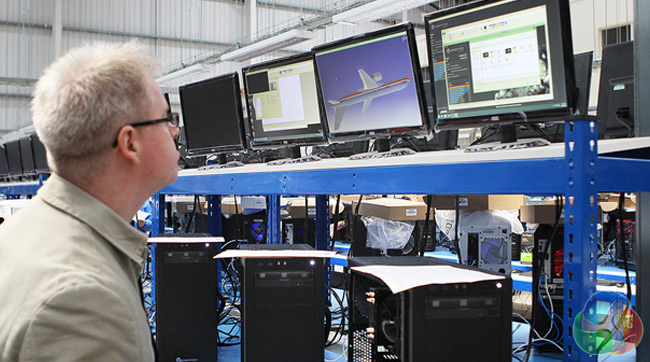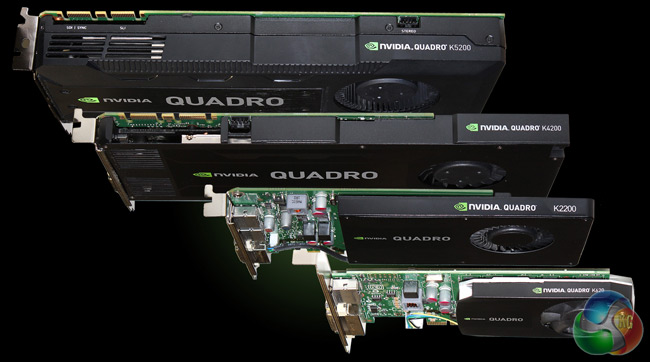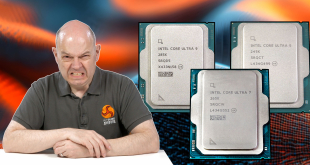The question on the table is, when buying a workstation for professional use, where should you spend your money? To help answer this question, KitGuru (KG) sat down for a chat with John Medley (JM), the head of sales and marketing for PC Specialist and the driving force behind the company’s winning formula for PC specifications.
KG: “Why this particular line up of systems?”
JM: “Every minute counts for professional users, so if we can help to increase the amount of work they can do in a day – we’re saving them valuable time and money. They need to be looking for powerful systems so, on the processor side, the choice is between Intel's Haswell-E and Xeon.”
KG: “What is the trade-off between these processors?”
JM: “Xeons have huge scalability in terms of the number of cores and threads available, plus some turbo capability. On the other hand, the Haswell-E processors offer a really stable overclocking platform, which is perfect for software applications that respond well to clock speed.”
KG: “Looking at all of the test rigs you have assembled at our request, each of these boxes looks very similar, can you tell our readers why?”
JM: “For the initial bank of benchmarks, KitGuru wanted to focus on the performance difference that the CPU and GPU can make in numerous different applications. By using the same core components (chassis, motherboard, power supply, CPU cooling, SSD and HDD) , we are deliberately removing a lot of variability between these systems so we can be confident in the results.”
Having checked carefully before we began, we can confirm that all three rigs supplied off the PC Specialist production line had vanilla set ups, with no factory overclocks and only a basic installation of the operating system before we started. KitGuru then made sure that all of the drivers and test software were installed.
Once we did a baseline benchmark test on the Intel Core i7 5820K system at stock speed, we then brought it up to 4.4GHz – in line with the kind of overclocking service that PC Specialist would offer a professional customer who requested an overclocked i7 workstation.
JM: “We’ve found the Core i7 5820K to be a very reliable processor and, with a high quality board like the Asus X99-E WS, it clocks to 4.4GHz on air with no stability issues.”
The cards made available ranged from the entry-level NVIDIA Quadro K620 through to the K5200.
KG: “Do all professional users choose Quadro?”
JM: “Not necessarily, no. Some software applications respond better to the more mainstream GTX Series and others prefer Quadro. This is why we aim to keep our workstation solutions as customisable as possible, so we can produce each system to specifically meet our customers' needs.”
KG: “The memory on our initial array of workstation systems is standard, in the sense that it is not ECC (Error Correction Code), why is that?”
JM: “You will find some users that want to specify ECC memory, but we find that they tend to be server purchasers. We install a huge number of memory modules every year and for us, Kingston HyperX is the best solution – and our customers agree – both in terms of performance and reliability.”
 KitGuru KitGuru.net – Tech News | Hardware News | Hardware Reviews | IOS | Mobile | Gaming | Graphics Cards
KitGuru KitGuru.net – Tech News | Hardware News | Hardware Reviews | IOS | Mobile | Gaming | Graphics Cards





✬✬✬✬✬✬✬✬✬♫♫Here is more profit with kitguru < I didn't believe …that…my brother woz like truly making money part time at their computer. . there aunt had bean doing this 4 only seventeen months and resantly paid the dept on there apartment and bourt themselves a Lotus Elise .
see this her ►►►►► ===—->-> SEE MORE DETAIL
⇛⇛❦⇛⇛⇛❦ $73.. per-hr @mi19//
,,,,,
➨➨➨https://WorldStarHipHopValley.com/done/opportunity..
☠☠☠☠—-.✉✉✉✉☠i like kitguru -in-law makes $86 /hr on the laptop . She has been out of work for 6 months but last month her paycheck was $14455 just working on the laptop for a few hours. check out the post right here > Find More